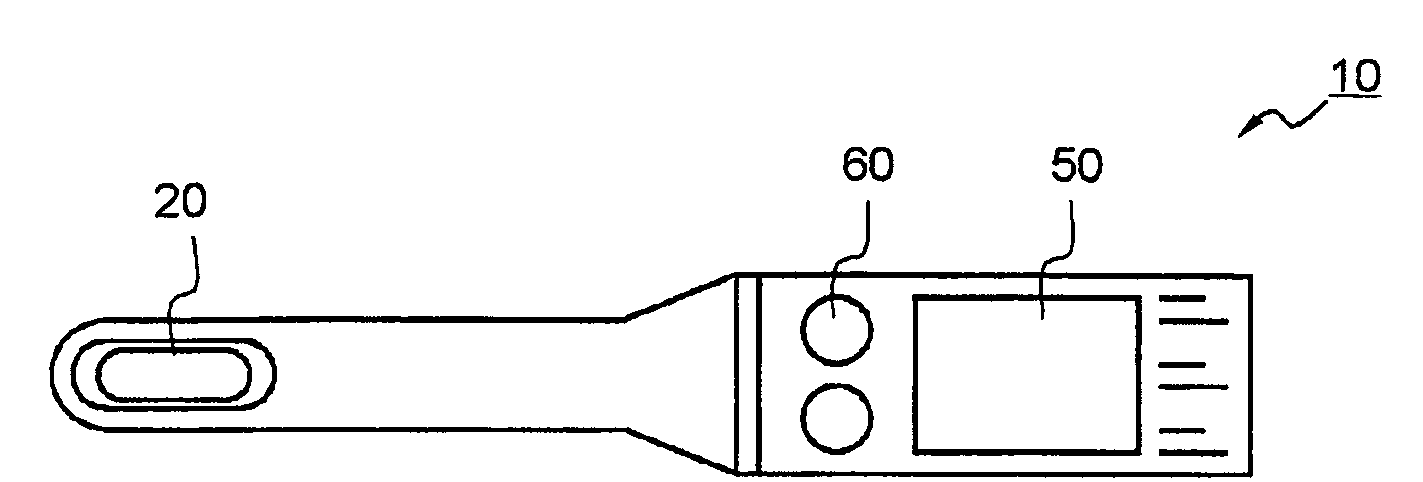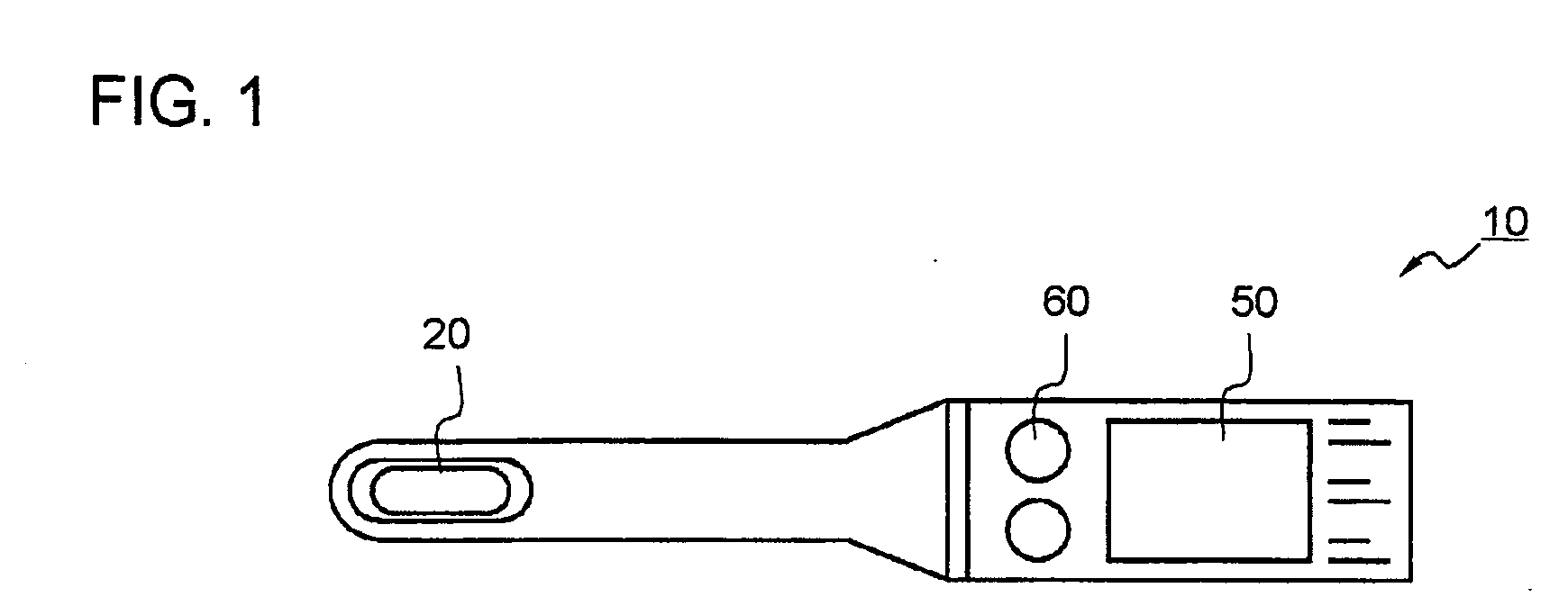Blood glucose measuring device and method of measuring average postprandial blood glucose
a blood glucose and blood glucose measurement technology, applied in the direction of diaphragms, special data processing applications, immobilised enzymes, etc., can solve the problems of urinary glucose, difficult to accurately estimate instantaneous blood glucose based on urinary glucose, and prone to largely fluctuation, so as to facilitate the check of the average postprandial glucose
- Summary
- Abstract
- Description
- Claims
- Application Information
AI Technical Summary
Benefits of technology
Problems solved by technology
Method used
Image
Examples
working examples
[0142]The method of measuring the average postprandial blood glucose according to the present invention will now be described in further details, based on the following working examples.
working example 1
[0143]The present inventor measured the blood glucose and the urinary glucose, under different water intake conditions during and after the meal load testing.
[0144]Conditions of the experiment are as indicated in Table 1. The experiment was executed with respect to a person with impaired glucose tolerance (56-year-old male, hemoglobin A1c concentration: 5.6%). The procedure of the experiment was executing the meal loading with respect to one and the same subject, to thereby measure the correlation between the blood glucose and the urinary glucose under different water intake conditions during and after the meal loading.
TABLE 1ELAPSED TIMEAFTER MEAL [MIN.]0153045607590105120135150165180Case 1WATER INTAKEN [ml]100URINARY GLUCOSEMEASUREMENTBLOOD GLUCOSEMEASUREMENTCase 2WATER INTAKEN [ml]200200200200200200URINARY GLUCOSEMEASUREMENTBLOOD GLUCOSEMEASUREMENT
[0145]In the Case 1, the subject intook 100 ml of water at the start of the meal load testing, i.e. ...
working example 2
[0163]FIG. 11 is a graph including a scatter diagram of sample data showing a correlation between the 120-minutes urinary glucose and the AUC of the blood glucose acquired from 133 sample providers including both males and females, and a regression line (calibration line) obtained through a minimum square method. The AUC in FIG. 11 was calculated by creating the blood glucose curve based on the postprandial blood glucose acquired from the sample providers every 30 minutes after meal, as in the case of FIG. 3, and with the renal glucose excretion threshold set at 170 mg / dL.
[0164]As a result, it has proved that the sample data containing the 120-minutes urinary glucose (x) and the AUC of the postprandial blood glucose (y) bears the correlation defined by the following equation (7):
y=3.3x+3.8·103 (7)
[0165]In FIG. 11, the correlation coefficient (R) resulted to be as high as 0.63, which indicates that a certain correlation exists between the 120-minutes urinary glucose and the AUC of ...
PUM
| Property | Measurement | Unit |
|---|---|---|
| time | aaaaa | aaaaa |
| concentration | aaaaa | aaaaa |
| area | aaaaa | aaaaa |
Abstract
Description
Claims
Application Information
 Login to View More
Login to View More - R&D
- Intellectual Property
- Life Sciences
- Materials
- Tech Scout
- Unparalleled Data Quality
- Higher Quality Content
- 60% Fewer Hallucinations
Browse by: Latest US Patents, China's latest patents, Technical Efficacy Thesaurus, Application Domain, Technology Topic, Popular Technical Reports.
© 2025 PatSnap. All rights reserved.Legal|Privacy policy|Modern Slavery Act Transparency Statement|Sitemap|About US| Contact US: help@patsnap.com



